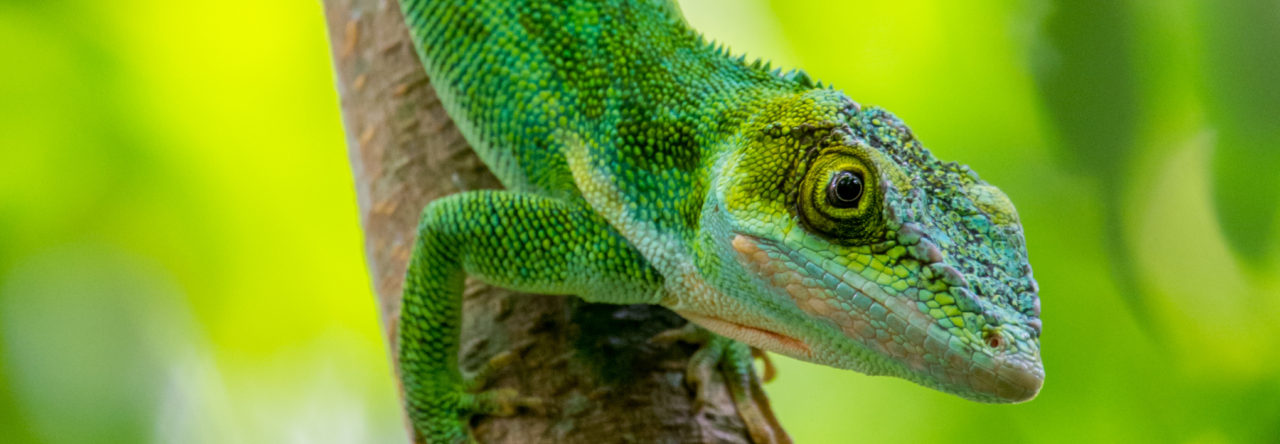
Brown anole on a tree. Image by Austin Garner.
Urbanization has introduced man-made substrates like metal rods and plastics into anole habitats. So, how does this shift in the ecosystem affect the locomotion of anole lizards that rely on the intermolecular forces between their adhesive toepads and substrates? At SICB 2025, Austin Garner, assistant professor at Syracuse University, presented his research where he explored this with Maxwell Handen and Maya Philips by looking at the climbing performance (ascending and descending) of two anole species: green anoles (Anolis carolinensis) and brown anoles (Anolis sagrei).
They investigated two main questions:
- How do natural and urban populations of green anoles differ in their morphology?
- How do morphological differences correspond to climbing performance of urban populations of green anoles and brown anoles?
A digital X-ray system was used to determine forelimb and hindlimb lengths. Aligning with previous research, the urban populations of both green and brown anoles were found to have longer forelimbs while brown anoles also had longer hindlimbs compared to the natural population of green anoles after accounting for body size.
The effects of these differences in morphology were evaluated by measuring and comparing the average and maximum climbing speeds of the populations using high-speed videography as they ascended and descended 45° and 90° inclines (wooden dowels covered with window screening mesh to enable robust clinging). Interestingly, natural populations of green anoles were not influenced by either the inclines or the running orientation, unlike the urban populations, which were significantly affected by the running orientation. Urban green anoles exhibited a reduction in speed as they moved downwards, which makes sense because they use their limbs as brakes. Urban brown anoles showed greater speed when climbing up, which is attributed to their longer and more muscular hindlimbs. Similarly, their descending locomotor performance was also reduced, especially when the surface was 90°. This suggests that better descending performance may require shorter strides enabled by shorter hindlimbs.
Garner is currently working on understanding and measuring the limb kinematics associated with the climbing and descending performances of these anole populations to shed light on their exact locomotor mechanisms, so stay tuned for those results!
- SICB 2025: Impact of Urbanization on Anole Locomotion - January 20, 2025


Leave a Reply